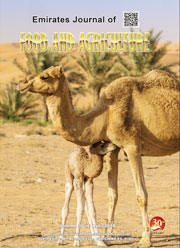SMALLHOLDER ORGANIC FARMER’S ATTITUDES, OBJECTIVES AND BARRIERS TOWARDS PRODUCTION OF ORGANIC FRUITS AND VEGETABLES IN INDIA: A MULTIVARIATE ANALYSIS
DOI:
https://doi.org/10.9755/ejfa.2015.04.038Keywords:
Organic Farming, Attitudes, Barriers, Multivariate analysis, IndiaAbstract
Indian organic food sector has experienced important growth during recent years. Despite growth potential, area under organic farming is meager. Indian smallholders (<2ha) are facing challenges to enter and sustain in the organic food sector and benefit from this growth in a sustainable way. In this context, the aim of this paper was to analyze smallholder farmer’s attitudes, objectives and barriers towards production of organic fruits and vegetables (F&V) in south India as well as to identify farmers’ profiles based on attitudes and objectives. The source of information used in this study was a field survey carried out during early 2014. Purposive random sampling technique was used to draw the sample (n=127) and the mode of data collection was face-to-face interviews; collected data were analyzed by using descriptive, factor and two-step cluster analysis. The results of factor analysis based on attitudes revealed that five factors including “Market”, “Environmental”, “Support”, Benefit & Cost” and “Community” factors explained 70.05 per cent of the total variance. Further, factor analysis based on objectives acknowledged the presence of three latent factors including “Economic”, “Environmental” and “Socio-cultural” factors explaining 77.90 per cent of the variance. Similarly, four latent factors were identified based on the factor analysis on sixteen barrier variables, representing “Production”, “Marketing”, Techno-managerial” and “Economic & Financial” barriers explained 68.52 per cent of the variance. Further, three clusters emerged on these attitudes and objective factor scores representing, 45 %, 23.6% and 31.50% of the sample size. All three clusters have different levels of orientation to produce organically on the basis of each factor. The “Market and economic” factors are most important in two clusters followed by “Government support” and “Environmental” factors; a third cluster was fairly indifferent towards the organic F&V production. Results of this research have implications for policy makers, marketing professionals towards organic agriculture development by calibrating appropriate strategies to promote organic farming and enabling supporting environment in south India.










 .
. 